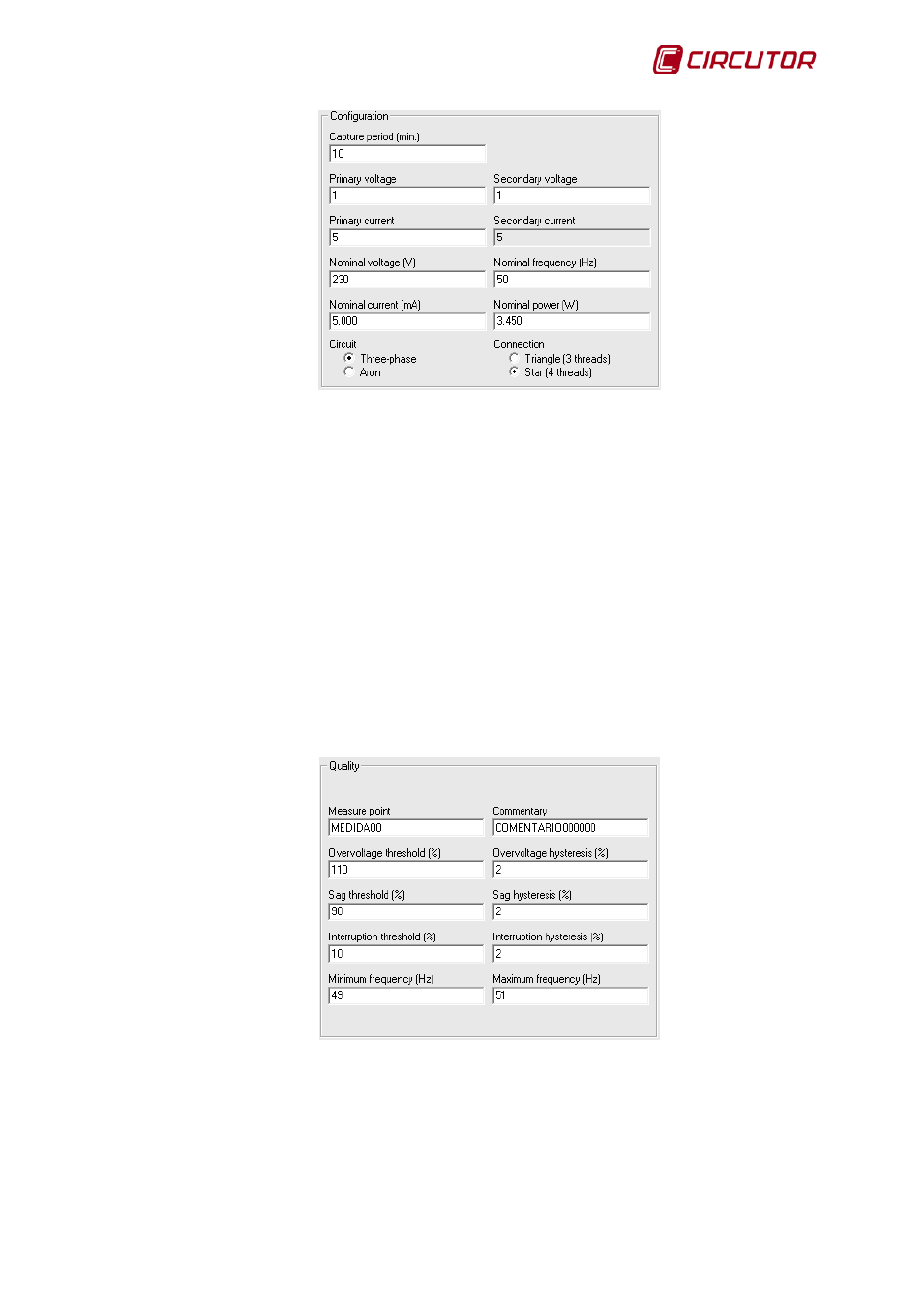CIRCUTOR PowerStudio Series User Manual
Page 221

PowerStudio
User Manual 221
• Capture period: Configuration in minutes between records stored on the device.
• Primary voltage: Device primary voltage value.
• Secondary voltage: Device secondary voltage value.
• Primary current: Device primary current value.
• Secondary current: Device secondary current value.
• Rated voltage: Rated voltage of the equipment, with a 3-wire configuration the composite
voltage should be programd and the single voltage on four wires. If the measurement is carried
out through voltage transformers, the programd value must refer to the secondary.
• Nominal frequency: Nominal frequency of the device.
• Nominal current: Nominal value of the device.
• Nominal power: Nominal power value of the device.
• Circuit: Enables the type of circuit to which it is connected to carry out the measurement to be
chosen, whether it is connected to a three-phase device or if it only uses two current
connectors for the measurement (Aron).
• Connection: Enables the type of connection to which it is connected to carry out the
measurement to be chosen, whether delta (connection between phases, without neutral) or
star (3-phase connection and neutral)
• Measurement point: Brief description of the measurement point where the QNA is situated
• Comments: Brief description of the measurement point.
• Overvoltage threshold: Serves to program the overvoltage percentage. Each semi-cycle with
an rms value exceeding this value will be understood as over voltage.
• Overvoltage hysteresis: Overvoltage hysteresis is where the start-up voltage is different from
the end voltage of overvoltage. An overvoltage will start when the voltage threshold value is